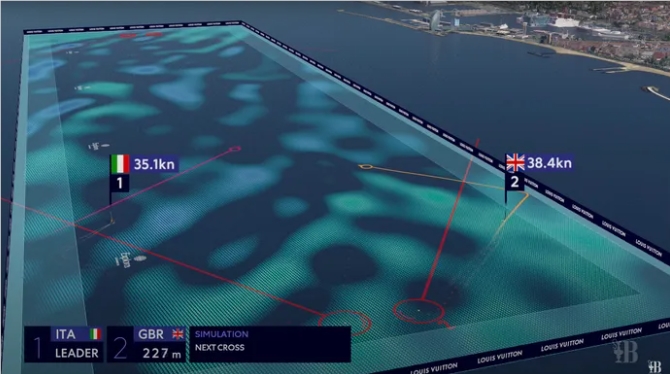The 37th America's Cup used the WindSightIQ program for the first time to visualize wind conditions in real time, bringing a new viewing experience to the audience. This technology, developed by Capgemini in collaboration with the America's Cup media team, uses lidar, sensor fusion and scientific computing to present the shape of the wind in augmented reality and virtual reality graphics, while simultaneously simulating the best sailing route for audience reference and comparison. .
For the first time in the televised broadcast of the 37th America's Cup, viewers will be able to observe a crucial but often invisible part of the sport: the wind. This is thanks to the WindSightIQ program developed by multinational consultancy Capgemini in partnership with the America's Cup media team.

WindSightIQ uses lidar, sensor fusion and scientific computing technology to display wind patterns in augmented reality and virtual reality graphics that can be displayed on screens during event broadcasts. The competition started last month and will last until October.
Wind field data collected by WindSightIQ is also fed into a sailboat simulator, creating a "ghost ship" that can be projected onto the track to demonstrate the optimal path that crew members should take based on variables such as wind direction, speed, shear and pressure. . This data is not provided to the crew, who must rely on their own intuition and training to plan the fastest route, just as their predecessors have done since the event began in 1851.
America's Cup CEO Grant Dalton said: "Before and after a race, commentators will now be able to see real-time wind patterns and explain competing sailing options to spectators. The ability to see the unseen wind and Comparing a team's actual performance and tactical decisions with their best lines means viewers can follow and engage with the game on a whole new level."
The application of WindSightIQ technology not only improves the spectator experience, but also provides new tools and perspectives for the analysis and research of sailing, indicating a new direction for the future development of this sport. Through visualization technology, the originally elusive wind conditions become clearly visible, providing spectators and professionals with a deeper understanding and a more exciting event experience.